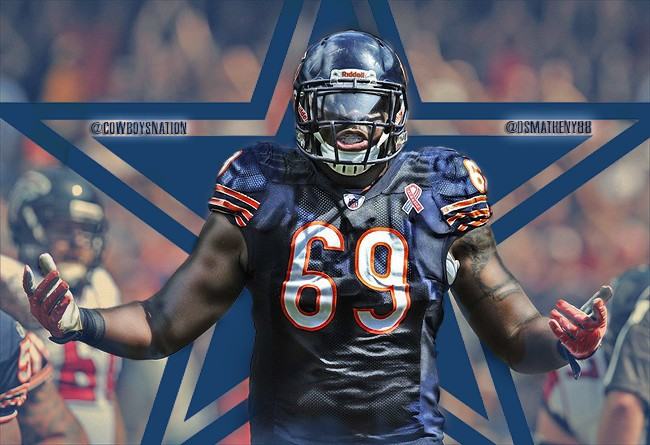The details of the Henry Melton Deal have been made public, and it looks even better for the Cowboys than previously speculated.
Here are the particulars:
- $1 million signing Bonus
- $1.25 million Salary in 2014 (non-guaranteed)
- Weekly Roster Bonuses of $78,125 (non-guaranteed – total of $1.25 million if on roster for all 16 games.)
- Up to $750,000 in Playing Time incentives
- Up to $750,000 in incentives for producing sacks
- $250,000 for six (6) sacks
- $500,000 for seven (7) sacks
- $750,000 for eight (8) or more sacks
- Club Option for 3 more years
- $9 million in 2015 (guaranteed ONLY if the Cowboys exercise their option to retain him.)
- $7.5 million in 2016
- $7.5 million in 2017
Breaking this down, even though Melton has the potential to make $5 million in 2014, he will only count $3.5 million against the CAP in 2014. Since he is technically playing on a one-year contract, his entire $1 million signing bonus counts against the Cowboys CAP this year. This is good for the Cowboys, because this means that even if they retain him in future seasons, his signing bonus this year will not count against the CAP in future seasons. Also, if they decide to retain him his $9 million salary makes him a prime candidate for restructuring in 2015 if the Cowboys decide they need more salary CAP room.
If Melton proves unable to recover from his injury, the Cowboys can cut him prior to the season, and only be out the $1 million signing bonus. They are paying for the right to evaluate Melton between now and September, and their doctors and training staff will get an up-close look.
This contract does NOT preclude the Cowboys from drafting a 3-technique tackle in May, because they can choose to cut ties with Melton after the season if a rookie comes in and outplays him. Also, if a rookie takes away his playing time, he will be unlikely to earn the extra $1.5 million in incentives.
This sets up the Cowboys for a good competition between two young players.
The incentive clauses for Melton means that those bonuses are defined as “unlikely to achieve”, meaning that even if Melton earns those bonuses, they will not count against the Salary CAP in 2014 leaving them more room to sign other veterans. Many Cowboys fans believe that the Cowboys should seriously look at signing a veteran receiver to play as the 3rd receiver. The Melton contract gives them room to do so.
Finally, if Melton returns to the form he had in 2012, the Cowboys get a very good Pro Bowl level player that is just entering his prime playing years – ages 27-30.
Historically, these are the ages at which defensive linemen have their best statistical years. Based on recent comments by Stephen Jones about not overpaying players over 30 years of age, this contract allows the Cowboys to get the best years out of Melton and then allows them to cut ties after the age of 30 without incurring a huge cost, like they have with Ware and Ratliff.
Melton has the opportunity to prove he is worth the average of $8 million per season for his prime playing years. He gets to play near his home in Grapevine, TX which is about 10 miles from Valley Ranch (and about 20 miles from the soon-to-be built new Cowboys home office in Frisco, TX), and also gets reunited with the Defensive Coordinator who brought out the best in him.
This contract is very Salary CAP friendly for the Cowboys and the risk is comparatively low. If you compare the $1 million signing bonus to the amounts the Cowboys shelled out for Ratliff, both of the Roy Williams’s, Miles Austin, and others who have not played up to expectations, this is a low-risk cost for the Cowboys to potentially have one of the best players in the NFL at the most important position in Rod Marinelli’s defense.
